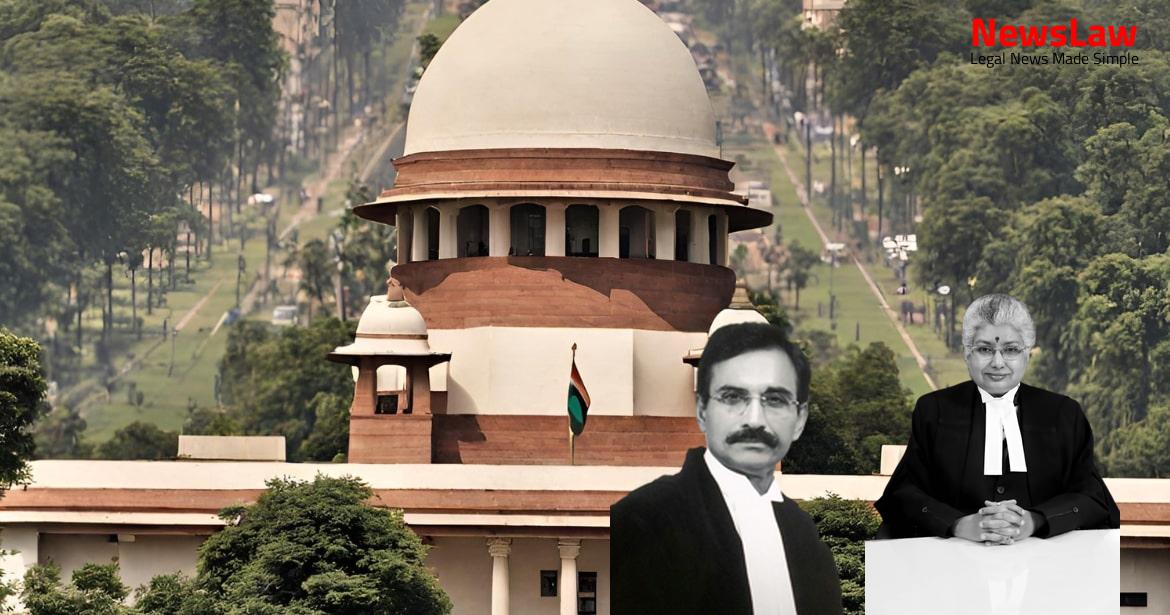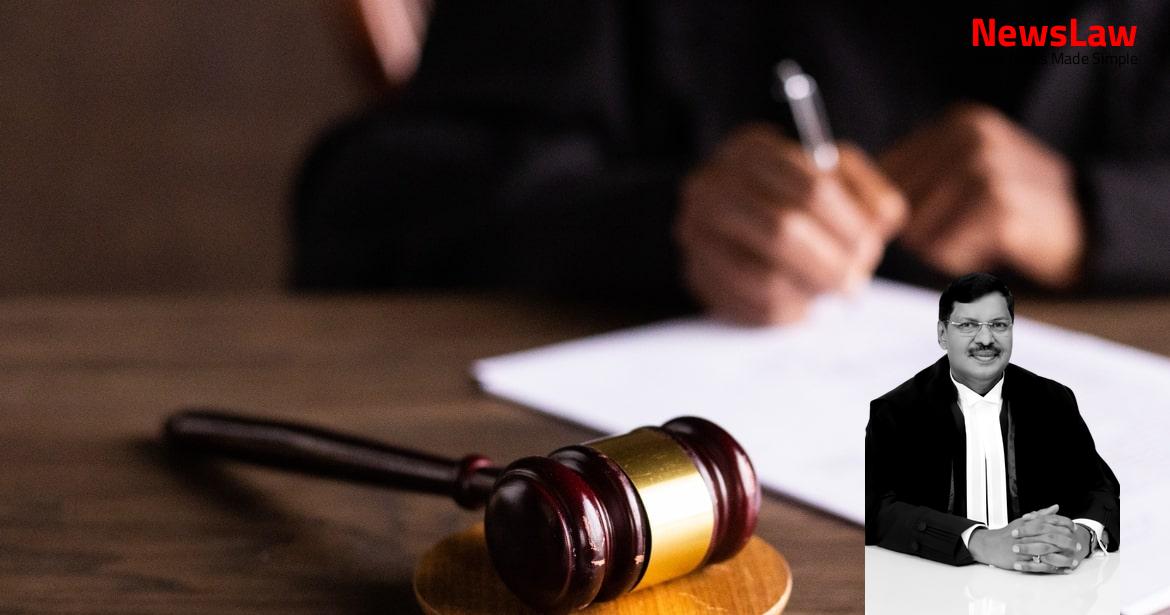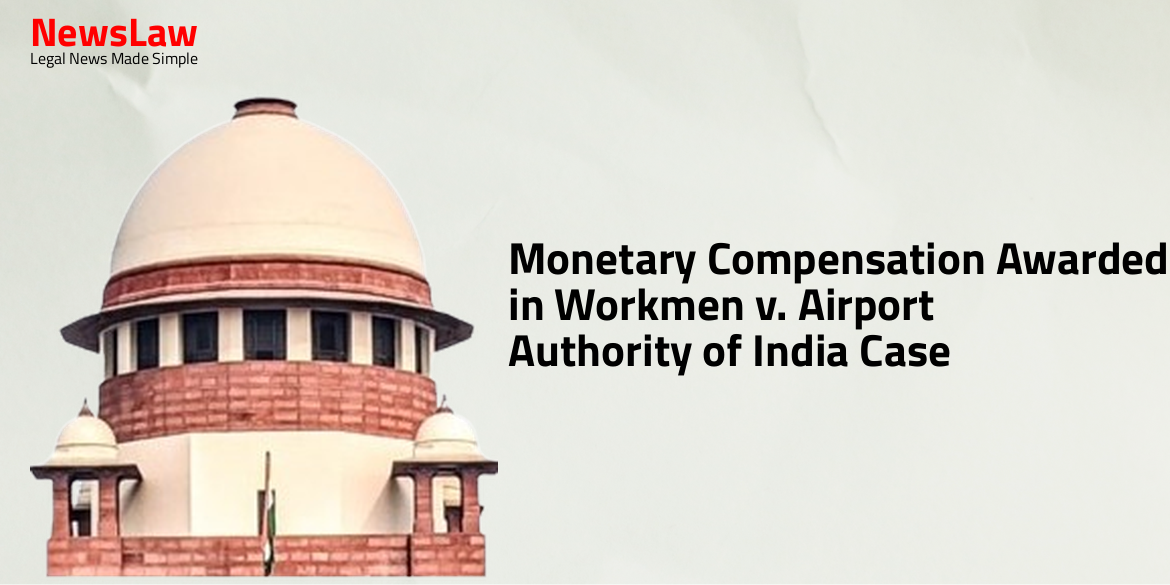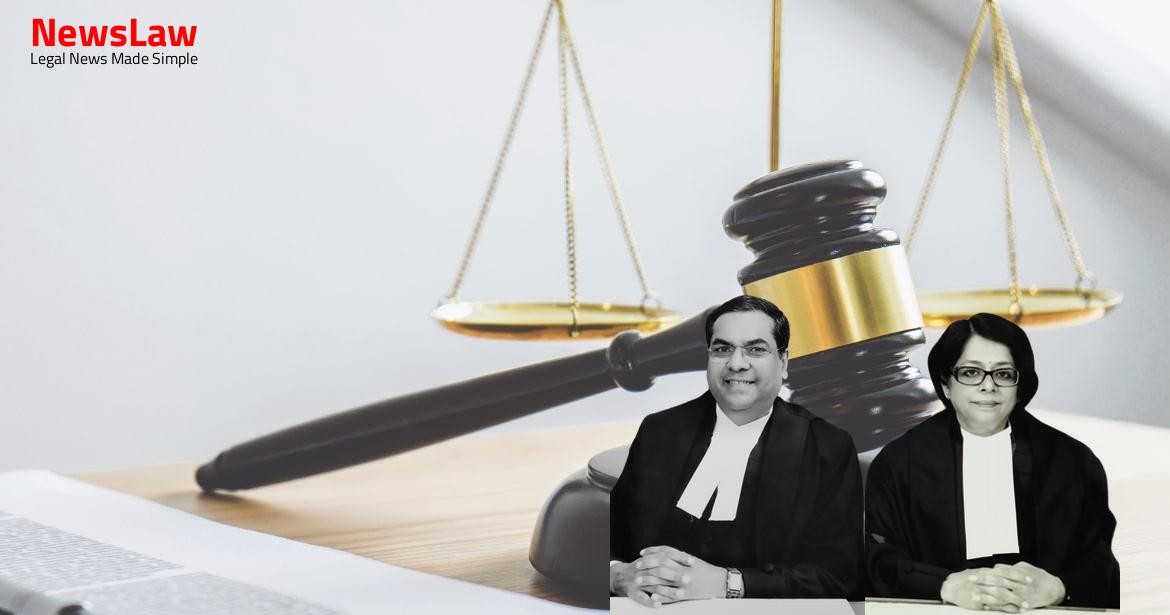Explore the detailed legal analysis provided by the court regarding the withdrawal of Corporate Insolvency Resolution Process (CIRP) proceedings in a recent case. The court delves deep into the intricacies of the Insolvency and Bankruptcy Code, highlighting key provisions and principles relevant to the resolution process. This summary focuses on the court’s key insights and interpretations, shedding light on the legal complexities involved in such proceedings.
Facts
- D. Ramjee, an ex-employee of M/s Aruna Hotels Ltd., filed an appeal before the Court regarding outstanding salary dues.
- Ramjee continued to work for the Corporate Debtor at a reduced salary after being requested by them.
- Management of the Corporate Debtor changed in February 2015, leading to disownment of previous commitments by the new Management.
- NCLT admitted applications under Section 9 of the IBC filed by D. Ramjee and another ex-employee, N. Subramanian.
- Assurance was given by the Corporate Debtor to NCLAT to pay arrears of salary to the employees who initiated CIRP proceedings.
- Payment was made to D. Ramjee by the Corporate Debtor as per the assurance given to NCLAT.
- K.N. Rajakumar filed an application seeking vacation of a stay order granted by the Court.
- Corporate Debtor approached the Court to challenge the resolution passed by CoC and NCLT orders permitting withdrawal of CIRP.
- K.N. Rajakumar, suspended Director of the Corporate Debtor, filed an appeal challenging the order passed by NCLAT.
- The Corporate Debtor initiated CIRP in response to C.P. No.478 of 2017 filed by D. Ramjee.
- CoC resolved to withdraw CIRP in a meeting on 25.5.2021.
- Order dated 3.3.2021 set aside NCLAT’s order dated 16.7.2018 and restored NCLT’s order dated 17.11.2017 admitting the application under Section 9 of the IBC.
- NCLAT allowed Corporate Debtor’s appeal on 16.7.2018 citing ‘existence of dispute’ on arrears of salary and unexplained delay by N. Subramanian from 1998 to 2016.
- N. Subramanian filed Civil Appeal No. 187 of 2019 against NCLAT’s order, permission to file an appeal by D. Ramjee was rejected on 3.3.2021.
- NCLAT on 2.8.2017 allowed an appeal and set aside an order dated 13.6.2017.
- Civil Appeal No. 1792 of 2021 by K.N. Rajakumar directed to be listed with Civil Appeal No. 2901 of 2021 filed by D. Ramjee on 23.7.2021.
Also Read: Legal Analysis on Seniority Fixation in Contempt Petitions
Arguments
- Order dated 13.6.2017 passed by NCLT admitting Section 9 application was challenged by the Corporate Debtor before NCLAT.
- View taken by NCLT and NCLAT that CoC should consist only of financial creditors as on the date of initiation of CIRP proceedings is considered untenable.
- D. Ramjee, not having challenged the order dated 2.8.2017 passed by NCLAT setting aside the initiation of CIRP proceedings against the Corporate Debtor, lacked locus in the proceedings initiated by the Corporate Debtor for withdrawal of CIRP proceedings.
- Section 25(2)(e) of the IBC requires RP to maintain an updated list of claims to ensure valid membership in CoC.
- Section 24(6) of the IBC mandates that voting share in CoC should be based on the financial debts owed.
- Composition of CoC must change based on updated claims of creditors according to various provisions of the IBC and 2016 Regulations.
- Corporate Debtor not having financial creditors implies CoC should have been constituted of operational creditors with D. Ramjee holding a substantial voting right.
- D. Ramjee did not challenge the order dated 2.8.2017, making it final.
- The new Management of the Corporate Debtor obtained a loan from HDFC Bank, acknowledged by NCLT in its order dated 4.6.2021.
- D. Ramjee received Rs.18,50,000/- as arrears of salary.
- K.N. Rajakumar contends that CoC should consist only of HDFC Bank, the sole financial creditor.
Also Read: Analysis of Authorization and Limitation in Filing Section 7 Application
Analysis
- Principle aim of I&B Code is to revive Corporate Debtors and make them going concerns.
- Adjudicating Authority can withdraw application admitted under Section 7, 9, or 10 with approval of 90% voting share of CoC.
- After CoC approves the plan, the Adjudicating Authority must ensure the plan meets requirements of Section 30(2) of I&B Code before approval.
- Approved plan becomes binding on Corporate Debtor, employees, members, creditors, guarantors, and other stakeholders.
- Legislative intent is to freeze all claims to give resolution applicant a clean slate.
- Section 12A of IBC allows for withdrawal of application admitted under Section 7, 9, or 10.
- RP and CoC have important duties and functions in the CIRP process.
- Resolution plans are subject to deep scrutiny by RP and CoC.
- It is a settled principle of law that the Court should not go into the academic issues and seek to interpret the provisions of law when it is not necessary for deciding the issues in the appeal(s).
- Reference 14 in this regard could be made to the judgments of this Court in the cases of Vidya Charan Shukla v. Purshottam Lal Kaushik and K.I. Shephard and others v. Union of India and others.
- Corporate Debtor settled issues with financial creditors and is now a going concern.
- NCLAT’s order allowing the appeal filed by the Corporate Debtor has not been challenged by D. Ramjee.
- The main objective of IBC is to revive the Corporate Debtor and make it a going concern.
- Revival of the concern should be attempted first, with liquidation as a last resort.
Also Read: Judicial Review of Selection Process for DGP Appointment
Decision
- The issue concerning D. Ramjee has attained finality as of 2.8.2017 when the appeal by the Corporate Debtor was allowed by NCLAT.
- Civil Appeal No. 2901 of 2021 was dismissed as the application for permission to file an appeal by D. Ramjee was rejected by the Court.
- NCLT, in its order dated 6.7.2021, correctly determined that after the withdrawal of CIRP proceedings on 4.6.2021, the powers and management of the Corporate Debtor were transferred to the Directors, making RP and CoC functus officio.
- The application filed by D. Ramjee was disposed of as infructuous by NCLT and the decision was upheld without interference.
- Civil Appeal No. 1792 of 2021 filed by K.N. Rajakumar was disposed of as withdrawn after the withdrawal of CIRP proceedings.
Case Title: K.N RAJAKUMAR Vs. V NAGARAJAN (2021 INSC 483)
Case Number: C.A. No.-001792 / 2021



